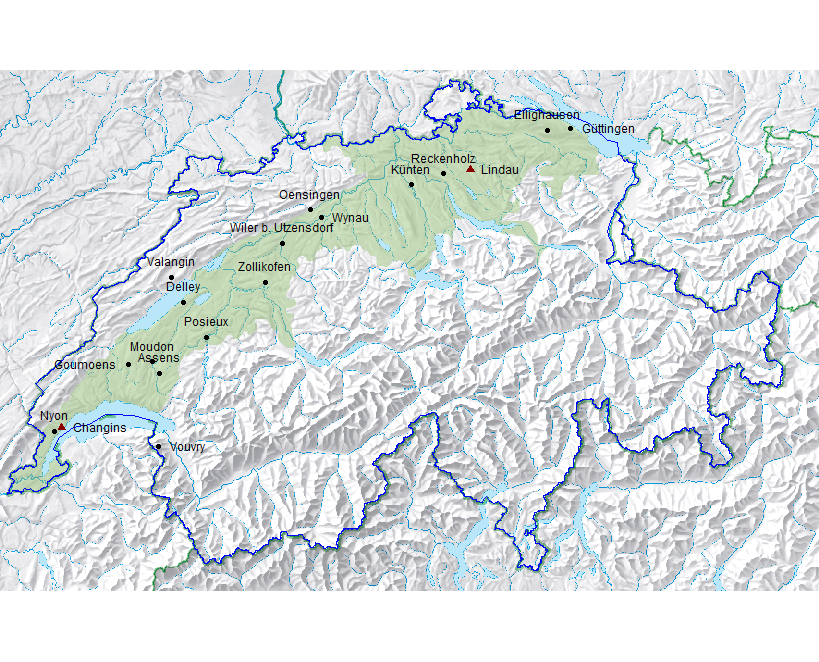Swiss Plant Phenotyping Network (SPPN)
SPPN operates as the Swiss node of EMPHASIS
Goal of the Swiss node of EMPHASIS
Phenotyping is a severe bottleneck in plant breeding, variety testing, crop protection and G x E x M research. Phenotyping means optical, precise and partly artificial-intelligence-supported determination of plant size, architecture and ‘performance’. Establishing, calibrating and validating new phenotyping methodologies requires adapted equipment, large and diverse sets of training and validation data. It also requires statistical learning methods to improve target traits such as yield and quality. Relevant training data need to be sampled on diverse sets of genotypes under diverse environmental conditions. We aim to utilize the experiments and measurements that are being done in the context of variety testing (Agroscope) and breeding research (ETH) to build up such training data of relevance for Swiss agriculture. Furthermore, we aim to harmonize methods and to identify those that hold great promise to be implemented as routine procedures at core field sites of ETH and Agroscope. Within the European phenotyping infrastructure network EMPHASIS, we aim to develop the basis for a pan-European network of sites with similar phenotyping capabilities, able to evaluate the specific suitability of different crop ideotypes to different climatic scenarios. We collaborate within the European projects external page INVITE, external page EMPHASIS-GO, external page AgroServ and external page PHENET.
Members of the coordination team:
Didier Pellet & Juan Herrera (Agroscope)
Achim Walter & Andreas Hund (ETH)
Example of use of advanced phenotyping methods

Core efforts will be on the improvement of wheat breeding workflows for the Swiss production environment, but phenotyping methods to be further developed will also be beneficial for soybean and many other crops. Our core sites are the field phenotyping platform of ETH Zurich in Lindau, and the Agroscope experimental station in Changins.
Wheat
The Swiss wheat production environment
Swiss wheat is produced in the Swiss plateau stretching from Lake Geneva to Lake Constance between 370 and 650 m altitude along the pre-Alpine region (Figure 1). Wheat covers an area of about 80’000 ha of which 90% is planted with bread wheat. About 8 % of the bread wheat area is produced under organic production. The Swiss wheat belt receives an annual precipitation of 800 to 1200 mm which is uniformly distributed throughout the year in the west and shows a clear summer peak in the east. The region is covered by snow during a few weeks in winter and receives a very low solar radiation in autumn and winter due to dense fog. Due to climate change, the climate is predicted to become dryer in summer and milder and wetter in winter (external page Climate Change Scenarios CH2018 - Swiss Plateau).
Swiss farmers receive subsidies to reduce nitrogen inputs. The targeted yield depends on the policy type and varies from 6 – 8 t/ha for conventional farming (called ÖLN) and 5.5 – 7 t/ha for extensive production excluding fungicides (called Extenso). The recommended nitrogen input for a reference yield of 6 t/ha is 140 kg N/ha. The recommended nitrogen input for a reference yield of 6 t/ha is 140 kg N ha-1 split across 2 – 3 growth stages (GS). The N application is usually split into three application: 30-50 kg N ha-1 at GS 21-25; 70-90 kg N ha-1 at GS 30-32; 30-50 kg N ha-1 at GS 37-39 (Bertschi 2020). The targeted plant density is 300-400 plants m2 to reach a targeted number 500 to 600 ears m-2.
Due to the increasingly mild winters, facultative wheat types (e.g. the variety external page Diavel) are developed by breeders.
The FIP platform follows ÖLN recommendation while the variety testing network tests under both ÖLN and Extenso conditions.
Wheat is classified into five classes (TOP, I, II, fodder and biscuit). The classification in the first three categories follows an index with independent threshold for each of the following criteria: baking quality, wet gluten content and agronomic properties. The quality and agronomy index follows a complex scoring scheme (Schema 90) including wet lab and baking test as well as measures of disease resistance.
Contact
Professur für Kulturpflanzenwiss.
Eschikon 33
8315
Lindau
Switzerland